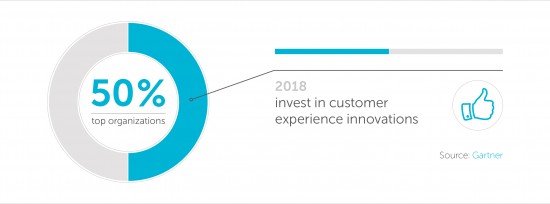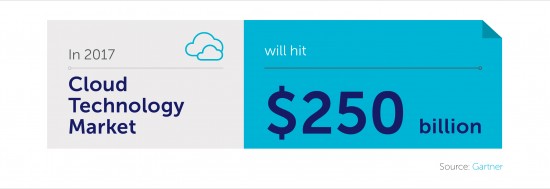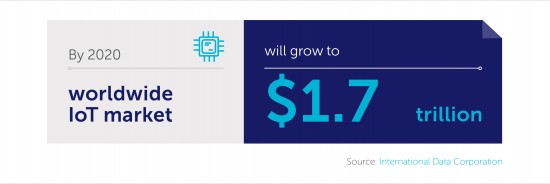


Many of us use the New Year as a time to set resolutions and become better versions of ourselves. Traditionally, we start with a list of things that will impact our personal lives: get in shape, stop procrastinating, spend more time with family.
This year, we challenge you to start the new calendar with resolutions for your business – and more specifically resolutions that will leave your organization better prepared for the ongoing digital revolution. Why?
According to Harvard Business School, leading digital companies generate better gross margins, earnings, and net income than organizations in the bottom quarter of digital adopters.
Leading digital companies generate better gross margins, earnings, and net income than organizations in the bottom quarter of digital adopters.
Consider adding the four following suggestions to your resolutions list and make sure to continue following through on them throughout the year:
Secure Your Organization
Every year the number of security attacks grow, with enterprise organizations finding it increasingly difficult to mitigate the consequences of data breaches. Resolve to be proactive about security in 2017.
Tom Puthiyamadam, global digital services leader, PwC, says:
“Businesses that integrate cybersecurity with digital strategies will be better poised to build trust into everything they do and transform faster. Leading companies are integrating cybersecurity, privacy and digital ethics from the outset. And that enables them to better engage with existing customers and attract new ones. Many also see efficiencies in operations, business processes and IT investments.”
Invest in a secure digital infrastructure to protect your organization’s sensitive data.
In 2016, we witnessed how hackers become more ingenious in their attacks:
MarketsandMarkets estimates the security market will grow from $122 billion today to $202 billion by 2021. According to IDC, the key domains for growth are security analytics, threat intelligence, mobile security, and Cloud security.
Prioritize the Customer Experience
Companies must learn from their customers to develop the tools, processes, and platforms necessary to build an exceptional customer experience (СX). According to leading design experts, CX will become the main differentiator among brands, overtaking price and products.

To deliver a great customer experience you need to know you customers better, in many cases, better than they know themselves. To achieve this, you should start by creating customer personas that can help you understand customer behavior and build experiences that reflect each segment’s unique drivers.
Embrace Cloud Technology
Over the past decade, technology has had a profound, transformative impact on our daily lives. Sometimes those changes are obvious to our customers, but many of those changes have happened behind the scenes. Consider Amazon Web Services (AWS), a leading Cloud platform used by many enterprise businesses.
Cloud technology allows developers to build cost-effective and scalable business solutions while driving digital transformation initiatives within an organization. Some business leaders are still wary of the Cloud, assuming it’s less secure than private servers. While that’s up for debate, according to Gartner, half of large enterprises will have Cloud hybrid deployments by the end of 2017.

Chris Howard, research vice president, Gartner, says:
“There are very real trends toward Cloud platforms, and also toward massively scalable processing. Virtualization, service orientation and the Internet have converged to sponsor a phenomenon that enables individuals and businesses to choose how they’ll acquire or deliver IT services, with reduced emphasis on the constraints or traditional software and hardware licensing models. Services delivered through the cloud will foster an economy based on delivery and consumption of everything from storage to computation to video to finance deduction management.”
Invest Early in IoT
Today almost everyone has heard about IoT and how it will transform how we work and play. It already surrounds us in cars and cellphones and even while making coffee. It’s an industry buzzword, and it can be tempting to ignore the latest fad – but when it comes to IoT, that would be a mistake.
For many companies, IoT will become a core concept for driving their digital business strategies, especially organizations that already rely on are devices and machines to collect and generate data.

When we discuss creating innovative experiences or transforming operations, IoT often plays a key role in the developing the solutions that address those strategies.
Though consumer applications are most well-known, IoT also stands to revolutionize environmental monitoring, infrastructure management, manufacturing, energy management, healthcare monitoring, transportation, construction, and more. Tomorrow’s market leaders are investing in IoT solutions today.
With the right technology strategies in place, leading enterprise organizations can take a broader, deeper, and more thorough approach to digital transformation that will result in competitive advantages in the marketplace.
Uncover more opportunities for long-term growth in SoftServe’s new guide, “Digital Strategies for Future-Proofing Your Business in 2017”, which explores digital infrastructure, the customer experience, and employee satisfaction.

